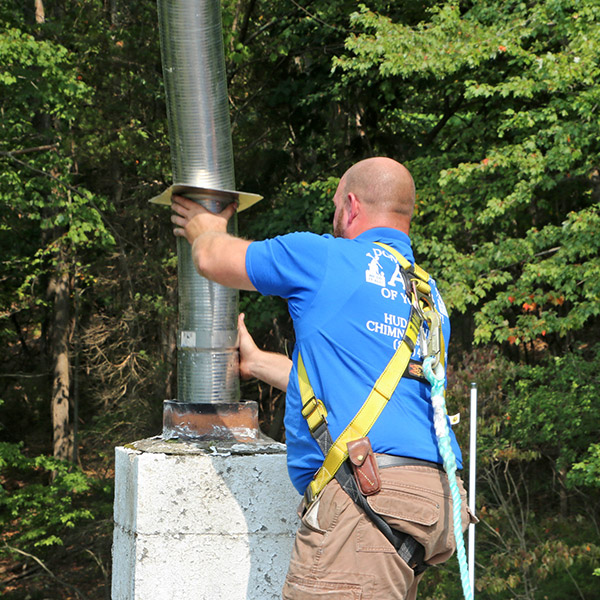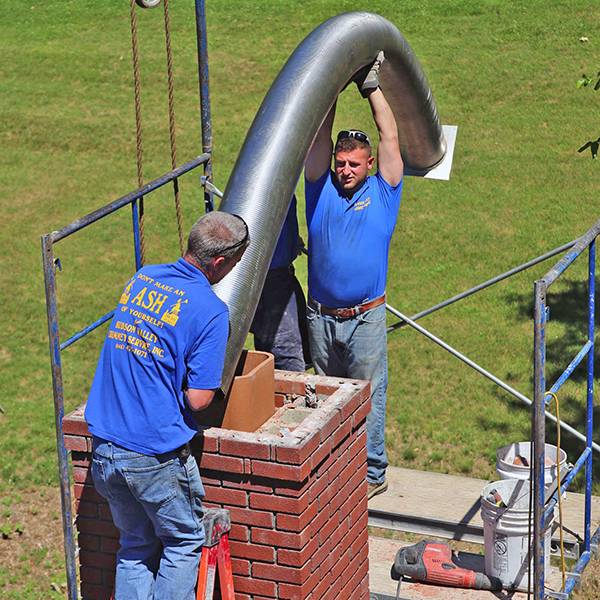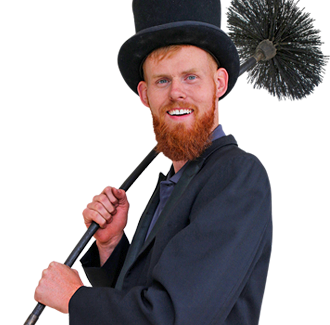Does My Flue Liner Affect My Chimney Masonry?
Enjoying the warmth of the hearth is one of the joys of living in the beautiful Hudson River Valley, New York region. However, while many folks in Beacon, New Paltz, and neighboring townships understand the importance of properly maintaining the fireplace, many need to realize how a flue liner affects their masonry chimney.
 What is a Flue Liner?
What is a Flue Liner?
Whether you have a gas or wood-burning fireplace, the chimney draft pushes the combustion byproducts such as carbon monoxide, creosote, soot, and other harmful contaminants out of the top of the stack as it draws fresh air into the fireplace. A flue liner protects the masonry walls from the damaging effects of these toxic substances and the intense heat in the flue that can reach over 1,100°F.
So, what happens when the liner has cracks or other damage? It increases the risk that the heat inside the flue will transfer to the attic, wood-framed chase, roof deck, or other combustible building materials and start a fire. New York building and safety codes require liners, but some older and historic homes built before liners were required may still have an unlined chimney.
Liner Problems Can Cause Masonry Damage
Several types of chimney liners include clay or terra cotta, cast-in-place (concrete), and steel. However, terra cotta clay liners are the most common in Upstate New York. Many homes still have the original fireplace liner approaching or have surpassed its 50-year life expectancy. This poses a considerable risk as cracks in the liner will damage the interior masonry walls. Since it is deep inside the chimney, most folks are unaware of the damage until they have a chimney inspection – or a chimney fire!
How does flue liner damage affect masonry? First, the combustion gases are highly corrosive. The brick-and-mortar or stone masonry will deteriorate without routine chimney sweeping, leaving gaps in the joints. Second, moisture, such as rain, snow, and ice, seep through these masonry cracks and accelerate their deterioration. It can cause bricks to flake, chip, and crumble. Third, spalling brick is a severe problem. As the mortar washes away, entire brick or stone masonry pieces can loosen and fall from the chimney, affecting its structural integrity. The chimney is now in danger of a partial or complete structural collapse.
Signs Your Flue Liner Needs Repair or Replacement
Some of the signs that indicate its time to call a certified chimney sweep to inspect the liner include one or more of the following issues:
- Pieces of the tile material in the firebox.
- Condensation on the liner.
- Water is leaking in the fireplace.
- Reduction in heating efficiency.
- Difficulty lighting or maintaining a fire in the fireplace.
- Smoke is filling up inside the fireplace.
Newburgh, NY Flue Liner Inspections & Repair
Your chimney liner, masonry chimney, attached heating appliances, and other components can become a fire and health hazard without annual inspections and cleaning by a certified chimney professional. Call Hudson Valley Chimney at (845) 471-1071 or contact us online to consult with a Certified Chimney Sweep®.









